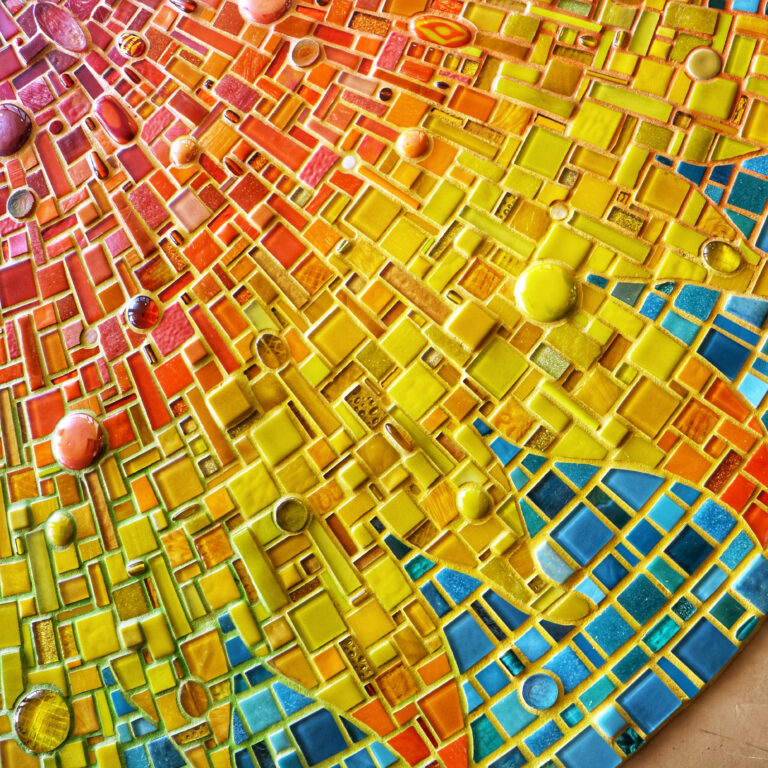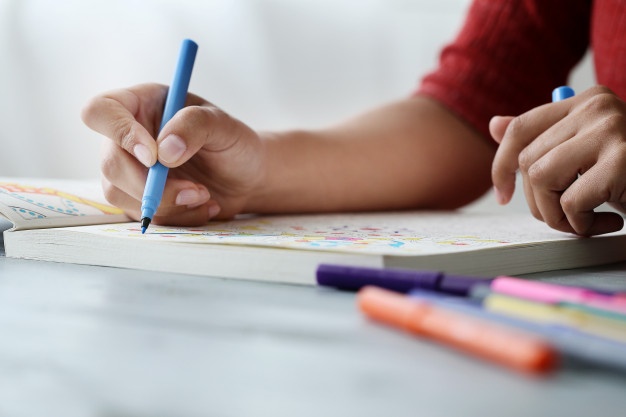How do you end the school year? Whether you are wrapping up now, or if you have a few more weeks left, do you have an end-of-year strategy? Because how you end a year can make a difference to the start of the next one. Whether you’re just finishing your first year or your twentieth year, check out my recommended end-of-the-year list and see if I have anything that surprises you. Or maybe I missed something. If so, add it in the comments!
Deep Clean and Purge
A lot of the time we art teachers are in survival mode. We are just keeping up with the day-to-day. The end of the year is a great time to give your classroom a much-needed deep clean. Don’t be afraid to end your curriculum and leave several days of cleaning with students. One teacher wrote that her students find cleaning and organizing, “satisfying and therapeutic.” Teaching students how to care for art supplies and studio spaces is a valid part of art education. By this time of the year, you have a good handle on your student’s strengths and weaknesses. Use the perfectionists to color sort all your construction paper. I tell you, there is someone in your classes who would just love to clean the rims of all your paint bottles. No job is too dirty! I always stocked up on sponges and cleaning supplies as the year comes to a close.
Don’t be afraid to purge as well. Does the tempera paint that you inherited, that you just know has turned bad, have any use? Get rid of them and make room in your storage areas. Cozy up with your custodians and ask for extra garbage pales. Go through your brushes and decide what is salvageable (pro tip: soak in Murphy’s Soap or fabric softener, see more cleaning and organizational hacks HERE) and get rid of ones that are not. Magazines that have been cut up for collages? Time to sift and send the spent ones to recycling!
Physically Organize
You would find me scooping all the boxes from the photocopy room well in advance of the end of the year. I would also buy a lot of inexpensive pencil boxes at an office supply store at the beginning of the year to store small paint brushes, erasures, sharpies, etc. There was no end to the uses for those containers. I also had my digital art students make labels for all my bins one year. When April/May hit I keep a piece of paper taped on the wall near my desk and jot down all the jobs I want to tackle with my classes. Oil pastels need to be cleaned off (with rice if you don’t know this trick, more cleaning and organizational hacks HERE)) and sorted by color is a chore perfect for the list.
The end of the year is a good time to think about the general flow of your classroom. It’s also a great time to reconfigure your classroom layout. I taught with one art teacher who changed up her table configuration at the end of the year. I think it helped her start fresh every year. What were the problems in your classroom that need addressing? Were students bunching up at the sinks? Did storage folders become lost often? Maybe next year you want to give students a personal set of supplies. Plan your strategy, space, and materials now.
Document Your Lessons
Part of my teaching career began before the world became a digital place. Now that the digital age is here, embrace it. Take all the pictures you can before you send those portfolios home. Spend time organizing your files so it’s not all just hanging out on your desktop but neatly organized in your folders. I always made folders for each high school class I taught. In each folder, I had sub-folders for each lesson I taught. Inside the lesson folder would include exemplars, worksheets, handouts, instructions, powerpoints, a document with links, etc. Make notes of what worked with lessons and what you’d like to try differently next year.
Prepare Your Students for a Creative Summer
Anywhere from January to the last day of school, I would field questions from my high school students and their parents about summer art programs. So, I started keeping a digital document of places they could take classes. From local art centers, people who give private lessons, museums, and colleges, I compiled quite an active list and updated it every year with current links to these organizations’ summer creative opportunities. Now, I had plenty of students who worked as well and I also sometimes acted as a reference for students for summer jobs. I also had ceramic students who worked at a local clay shop where they gave lessons and birthday lessons.
If you teach advanced art classes and/or Advanced Placement, consider summer homework. I also kept my art club and National Art Honor Society abreast of art happenings and opportunities over the summer like Interesting art exhibits, volunteer opportunities in the arts, etc. I encourage them to look for art opportunities if they travel. It was one of my students who introduced me to the sculptures of Patrick Dougherty after seeing his work at a museum over summer vacation. Warmed my art teacher’s heart! I ask my juniors and seniors to check out the art departments at the colleges they visit, even if they aren’t majoring in art. Check out the article, Keeping Students Creative in Summer. One of the nicest things a teacher ever did for to send me home with a small pile of art supplies and a portfolio he scrounged from his supply room so I could explore creatively over the summer. He also arranged for me to take classes on scholarship at a local community art organization he was involved with.
Update your Resume and Teaching Portfolio… Really
Another good thing to do is think about your teaching portfolio, even if you are not job hunting. Take some time to note your accomplishments of the year and add them to your resume. If you put 10 minutes into your resume now, it will be much less painful when you actually need to do it. You just don’t know what the future has in store; maybe you will have a chance to become a department chair, move to a different level, teach at a school close to your home, or teach at the college level.
Plan For School Starting NOW… Really
Unless you’re retiring the next year is always looming. Hopefully, you know what you are teaching next year. Your future self will thank you if you prep your back-to-school items now. Right now you are still thinking of school. Remember how dizzying September is when it arrives? Update, print, and copy your getting-to-know-you questionnaires. Pick your first projects for your classes with the supplies you have right now. Always assume those orders won’t be there when you start.
Plan for Summer
Do you have Professional Development to do? Do you have a media you want to learn and incorporate into your curriculum? Or just a creative pursuit for your own self? Look at art centers, local museums, colleges, and online as well for professional development options. It’s so important to give yourself physical and mental space away from school but don’t be surprised if it takes time to hit your summer groove (Check out Transition to Summer Mode). Most of all, rest and recharge. Teaching can be an all-consuming career but we do both ourselves and our school communities a favor by returning to school having rested and reset ourselves.




